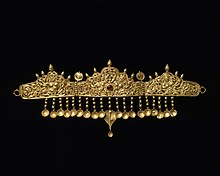The Fernbank Museum's new exhibit was drawing huge crowds, to the delight of their marketing manager. Who could resist the giant, nearly complete skeleton of a dinosaur that resembled nothing more closely than an enormous snake with legs? Particuarly one that had been discovered in their same state, up in the mountains of North Georgia. Hunter, a 10 year old boy who lived nearby, certainly could not. He loved anything to do with skeletons and dinosaurs, and had been begging his mother for months to visit the exhibit.
Unfortunately, the same day that Hunter was planning to go to the museum, there was a solar eclipse. His mother told him to stay inside, as looking at the sun could blind him. The museum was not even going to be open to the public that day, so there was no point in going.
Hunter was heartbroken. His dream was so close, yet so far. He decided to sneak out of his house and keep his eyes fixed on the ground. He knew the way quite well, and the roads were eerily empty.
As he walked across Atlanta, he heard a very strange sound. It sounded like a deep, far-off ribbit. He cautiously looked around, but saw nothing. The day was growing darker and darker, until there was no light. He looked up and stood frozen in shock. The sun was not covered by the moon, but by a giant frog.
 |
| Frog swallowing the sun. Web Source: Fox23. |
Hunter decided that presumably the museum would know how to deal with a giant, sun-swallowing frog, so he ran as fast as he could without tripping over branches and pine-cones. He arrived breathless, and slipped inside an open door. The museum exhibits were dark, and no security guards blocked him from the dinosaurs.
Somewhere in the museum, a small animal bleated.
The next thing Hunter knew, a thick, scaly body was moving past him. He ducked out of the way of a leg as it arched over him. Despite his terror, he suddenly realized what an amazing opportunity this was. An ancient, supposedly extinct animal had come to life before his eyes.
By this time, the museum employees had become aware of the chaos in the exhibit hall. "It's an Ustu'tli!" screamed someone from the anthropology department. "It hates fire!" Another employee was frantically calling the police and the fire department.
Hunter ran around, chasing the ustu'tli. He knocked over a candle that had been lit in one of the offices, and fire began spreading around the building. The ustu'tli roared in pain as its scales began crackling in the heat. By the time the police got there, they were able to corner and shoot it.
Suddenly, the sky grew bright again. All the noise from the chasing and shooting of the ustu'tli had scared the frog away from the sun. Hunter slipped back home quite satisfied with his experience of the eclipse and the ustu'tli.
Author's note: I based this story on two different Cherokee stories. One says that eclipses are caused by a frog that swallows the sun, which is chased off when scared by guns and drums. The other involves the ustu'tli, a large snake with legs which bleated like a young fawn to scare off hunters. One hunter dared to enter its territory and defeated it with fire. The mountain it lived on in the story is actually found in North Georgia, so I decided to set it at the Fernbank museum which is found in Atlanta.
Bibliography: James Mooney's
Myths of the Cherokee,
Link.
















